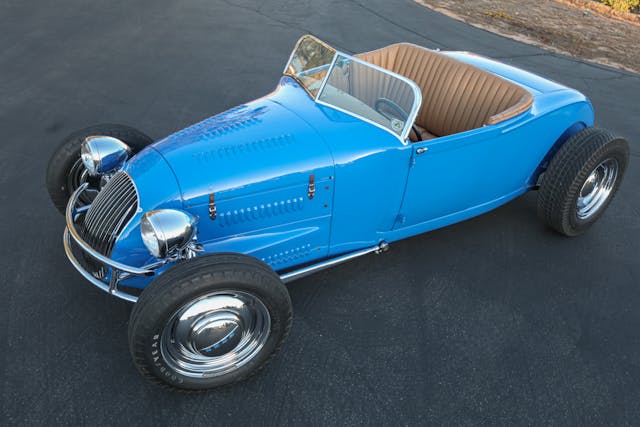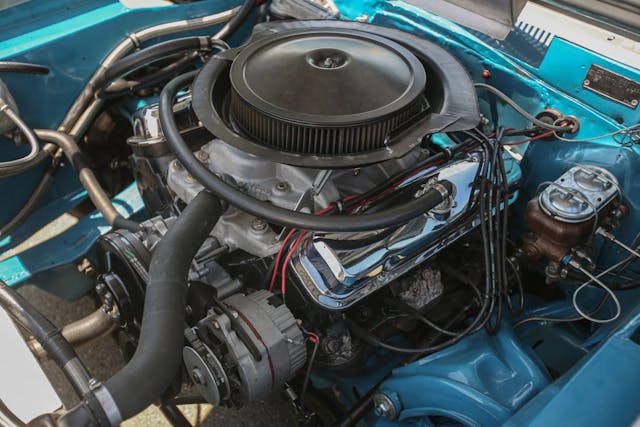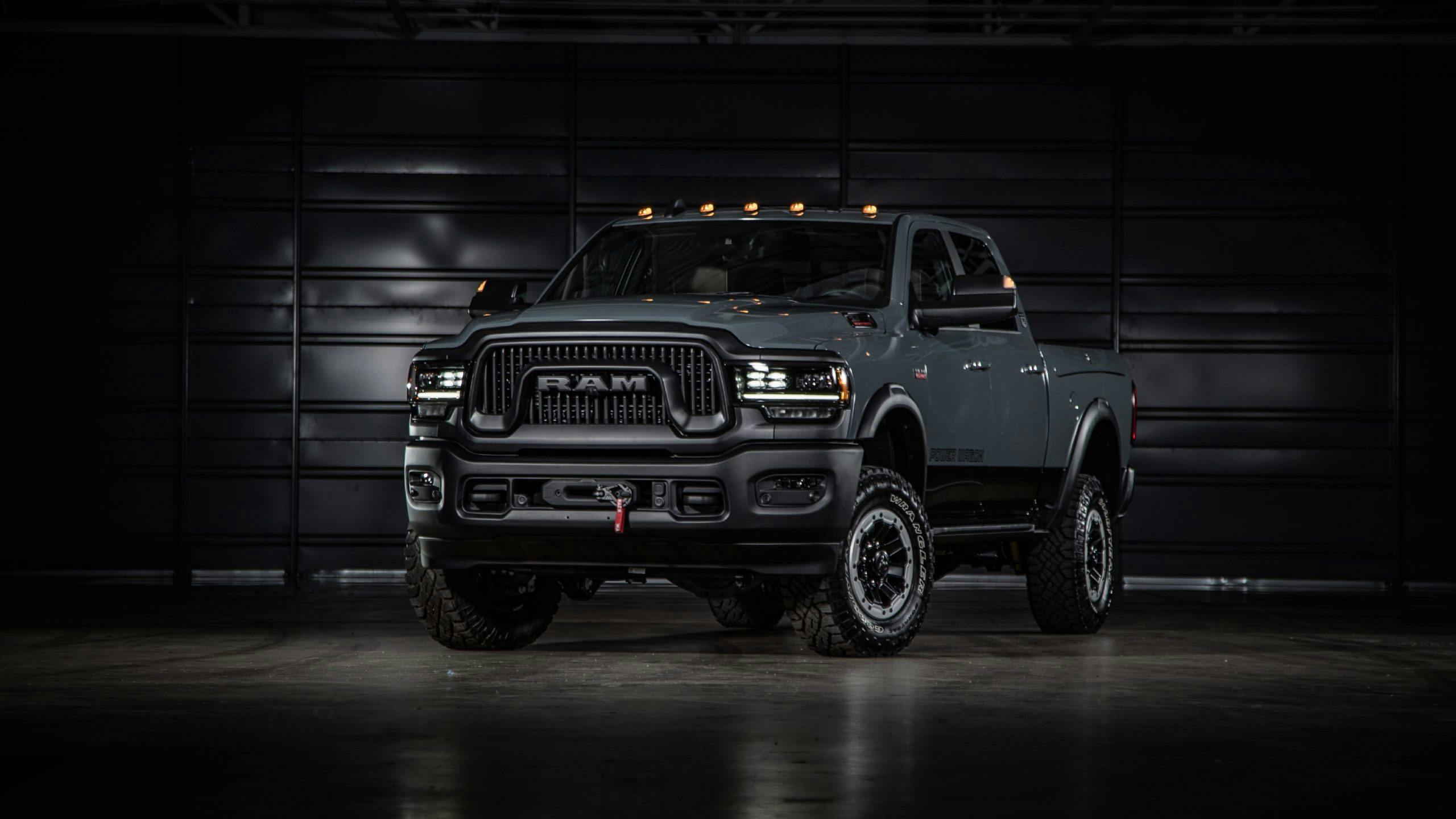4 car terms misused by almost everyone
Automotive enthusiasm has its own glossary. Many of the terms mean something different from one niche of the culture to another, but some have well-established definitions. Below are four of my biggest pet peeves in car nomenclature.
Some argue that because language is always changing, every word acquires a new meaning over time. That’s true, but only if we let them—and why fix what isn’t broken?

1. “Roadster”
The slow evolution of the term roadster is one that I’ll have to accept, but there’s a bar for entry—a point at which a car is simply not a roadster.
A century ago, “roadster” meant a two-seat, topless car with minimal weather protection. A Ford Model A roadster doesn’t have glass side windows, while a Model A cabriolet does. By the 1950s, the word’s meaning had been nudged a little—European sports cars with fabric side curtains and tops were still called roadsters, because their weather gear didn’t do much.
Later, the term evolved into a way to differentiate between sporty, two-seat convertibles and larger, more luxurious four-seat convertibles. That makes for a blurry line, of course. The Porsche 718 Boxster is a roadster, a 5000-pound, four-seat Bentley Continental GTC is not, and there’s plenty of room between the two for debate.
The upcoming Tesla Roadster, with its four seats and its fixed rear roof, is not a roadster by any definition, past or present. What’s so bad about admitting that a car is a targa-top?

2. “Big-block” Pontiac
Spend enough time searching classified ads, you’ll inevitably come across a car powered by a “Pontiac big-block.” There is no Pontiac big-block.
Pontiac unveiled its first V-8 in 1955. For nearly 30 years, until the division replaced its house V-8 with a version of GM’s “corporate” Chevy small-block, there was only one Pontiac V-8 architecture. From 265 cubic inches all the way to 455, Pontiac used just one bore spacing (the distance from the center of one cylinder bore to the center of the adjacent bore in the same bank). The 5.0-liter used in early Trans-Am racing (above) has the same external dimensions as a 455.
(Before anyone mentions it, Big Chief cylinder heads bolted onto a Chevy big-block bottom end don’t make the engine a Pontiac big-block.)
Oldsmobile is the same way, with identical bore spacing in everything from the 303 Rocket to the monster 455. Olds fans like to differentiate between small- and big-block engines based on deck height—the distance from crankshaft center to cylinder top—but that’s not what makes a big-block in my book. Tall-deck Chevy LSX engines are still small-blocks, after all.
With Olds and Pontiac, it seems the confusion comes from the fans themselves—each brand is now dead, and neither used the “small-block” or “big-block” nomenclature in any official capacity.

3. “Heat Soak”
When the C7 Corvette Z06 debuted for 2015, road-racing netizens were quick to assault its supercharged, 650-hp LT4 V-8. They were certain that a naturally aspirated V-8 was the proper choice for a track-focused Corvette.
They had a point, at least for a bit. The initial version of the cooling system in that Z06 wasn’t up to the task of keeping intake air cool for prolonged track sessions at high ambient temperatures. The result was reduced performance. For 2017, Chevrolet remedied the problem with a new cooling system and a supercharger lid with an improved charge cooler. (The latter part also found its way onto later applications of that engine, including the sixth-gen Camaro ZL1.)
Plenty of outlets said those early Z06s were experiencing “heat soak.” They weren’t. The engines in those cars simply produced more heat than the cooling system could deal with. “Heat soak” is what happens when an engine’s cooling system rises in temperature after you shut it off. When the water pump is no longer pumping coolant through the radiator, because that pump only runs when the engine is running.
Park a hot car, fresh off the track, and turn off the engine—coolant temps will continue to climb. If an engine is still running and still pushing coolant through its radiator, but it can’t keep everything happy enough to produce the quoted factory power? We already have a term for that: overheating.

4. “Widebody”
I’ve saved my most pedantic pet peeve for last. Fender flares don’t make a car a widebody.
Blame Dodge for legitimizing this. The picture above is a “widebody” Challenger. The car is also offered in a standard “narrow” configuration, without the fender flares.
If the fenders and quarter panels on the “narrow” and “widebody” versions of a car are the same, something doesn’t add up. Let’s use a Mopar cousin as an example: You could call the Ram TRX (below, left) a widebody, sure. The body is substantially different from that of the base Ram. But the Power Wagon? I don’t think so.
Many of you probably disagree with these silly opinions. I’d love to hear your own car-language pet peeves—share them in the comments! (Just don’t expect to change my mind.)
***
Check out the Hagerty Media homepage so you don’t miss a single story, or better yet, bookmark it. To get our best stories delivered right to your inbox, subscribe to our newsletters.





OMG – don’t tell, Hemmings… Motor News! 😉
But yes- you are correct
I’m sure I’m in the minority with this but , rocker covers vs valve covers
But, don’t they also cover the valve stems? Or, am I thinking wrong about that?
They also cover the valve springs but not called spring covers 😎
My thinking is that the main purpose is to keep the oil in the engine that is pumped up to lubricate the rocker arms and to keep dirt out.
….when you remove the covers, you see the rocker arms first and formost.
Unless of course it’s an overhead cam engine and then they are cam covers 😎
I appreciate the comments on “roadster” but while we’re being picky I have to point out that the Porsche Cayman is not a roadster. It’s a hardtop coupe. The Porsche Boxster is a roadster.
You beat me to it. Not picky at all.
Using muscle car and pony car interchangeably bugs me. Muscle cars are the mid size bodies ( Cutlass, GTO, Torino, Roadrunner, Charger, etc.) while pony cars are the compacts modeled after the Ford Mustang (Cougar, Challenger, Dart,Camaro, Firebird,Javelin, etc.).
That’s where I stopped reading.
I’m sorry, but under no circumstances is a Porsche Cayman a roadster…now a Porsche Boxster, perhaps, but only as it’s a two seater convertible. The first example in the article immediately calls into question everything else that follows.
You used Porsche Cayman as an example of a Roadster. I’m sure you meant Boxster since the Cayman model is a two seater Coupe.
My pet peeve, like several others, is rim vs wheel. Most young people use the rim term when referring to wheel.
Great article though!
Before the aluminum wheel became the norm, but after the spoke wheel (wood, then steel), steel wheels were comprised of two pieces: the rim and the center section, which were welded or riveted together.
The one incorrect terminology that wants me to poke my eyes out is “short shifter” when describing
a shortened throw manual transmission linkage. A “short shifter” is someone who shifts to a higher gear
well below the redline or some designated rpm point. A “short throw shifter” would be the correct terminology for a shifting linkage that has a shortened or very short indent from gear to gear..
Sorry, but you are plain just WRONG about Oldsmobile big block/small blocks. (Not talking about 394’s or other earlier Olds engines) Yes the bore center is the same on the ‘modern’ Olds engine. Deck height DOES make the difference in whether it is called big block or small block as well as the fact that crank journal sizes make small block cranks NOT interchangeable with big block. All the small blocks from 1964 until Olds quit making their own engines had the same 3.38 stroke and journal sizes only with different bores. 260 to 403 used same stroke. (Diesel 350 is an exception to crank journal size>>bigger journals than gas) Same with the big blocks with a couple exceptions>>they changed stroke in 1968 to 4.25 for the 400 and 455 from 3.98 that was used on pre ’68 400 and 425. 68-69 400 had a smaller bore than previous year and used the longer stroke of the 455. All Oldsmobile heads could theoretically go on any engine, but chamber and valve sizes differed. True that Pontiac blocks were all same physical size but it has been common from the beginning that anything over 350 cu. was considered ‘big block’ and that came from the factory back when they had displacement limits for midsize cars until the GTO came out. Same went for the late post-nailhead Buicks. Buick ‘big block’ 455 was actually about the same weight as small block Chevy.
I knew when I saw the title of this article that it would draw a bazillion comments, and I was right (again!)
Roadster: a car with no or a removable/folding top, and NO windows in the doors that roll up. Right?
Big Block Pontiac: First, the writer must be from the Provinces up North, if he remembers a ‘265’ Pontiac in 1955; US Ponchos had 286.something cid engines, going to 316.something in ’56, 347 in ’58, and 389 in ’59. The 421 based on the same biggish block came out in very late ’61, according to some POCI club guys. Then in 1966 the engine was modded a bit, and came in 400 and 455 flavors. But wait: in 1963, DeLoran snuck a 336-cid version into Tempest/LeMans, reverting to 326 in ’64-’66. Then it was a 350, but not a SBC 350. But wait; there was a small-block Pontiac in 1961-62 in the Y-body Tempest/LeMans: the 215-cid. — but it was a Buick (not an Olds, btw, as HRM called it a few years ago!) Only a skosh over 2,000 were made in each of those two years; Buick didn’t want to sell it but GM made them, as John needed it’s light weight to advertise the ‘Car of The Year’ Tempest as having 50/50 front-rear weight distribution. But wait: the BBP was cut in half to make the Tempest 195.something 4-banger, the only production four ever sold with a 4-bbl. carb stock!
The 1955 V-8 and the last 455 had almost identical weights and dimensions, but not all parts swapped. Also, the 336/326 used the BBP 389 crankshaft, and the Tempest 4 used the same stroke. Whew!
Guess that’s all the time we have for today, class dismissed!
My personal pet peeve is “dashboard.” The dashboard, from early days of the automobile, is where the pedals are located and where the front seat passenger places his or her feet. The item is front of the driver and passenger is the instrument panel. It is not a dashboard.
To be more precise the part that faces the driver is the instrument cluster. The entire assembly is referred to as the dash assembly (remember the phrase “padded dash?”) The angled part of the floopan is known as the toe board and the vertical part from that point upward is the firewall. So, the part of the interior that attaches to the firewall is called the dashboard. Now you know.
Yep, “dasher board” is in the word history there I believe.
Properly, it’s a fascia
It goes back further than the automobile itself, as “horse dash” was manure, and the board was to protect the driver from getting a face full of it!
On what planet would a Cayman be considered a roadster? It has a fixed roof! Perhaps you mean the Boxster, which IS a convertible?
My sentiments, exactly!
Head up display, not Heads up display
Unless you’re talking about Cerberus. Google it.
The whole small block-big block thing drives me crazy. Especially when not needed as in “I’ve got the Ford 390 big block” As opposed to what? A 390 Ford small block? And then what is a big block? The is no set definition and the term really isn’t usually needed. To say the brand and displacement says it all in most cases!
Chevy made a small block 400. Olds made a big block 400 and a small block 401. Think outside dimension.
And Ford made three different 351s, one of which was the same block as a 302 small block and one of which was the same as the 400 big block. The other is the odd one out, but I don’t think anyone would use “medium block” as a real term!
With respect to the Pontiac block size: The 1955 Pontiac that I own has a 287 cubic inch V8. The article says 265 for the first Pontiac V8. I am unaware of any Pontiac engine of that size. The 1955 Chevy V8 was indeed 265 cubic inches. I think the author may have made a simple error in that respect.
265 and 301 were the last Pontiac built V8’s. 287 was the first Pontiac V8 in 1955 as you say.
I came across this Hagerty article the other day the Pontiac made in Canadian plants prior to 1965 used Chevrolet engines, hence 327 283 265 in Canadian Pontiacs.262,265,283,287,302,305,307,327,350,400
These were the 10 displacements of the small block Chevys until the LS took over…
Don’t know what is wrong with their posting process>>said I’m ‘posting too fast’????? I don’t type that fast and it ‘lost’ my post after spending time to type it.
Joe, I agree about their posting process, or lack of it. Seems some people can get to say what ever they want, while others get “reviewed” before they get posted, if ever they get posted. Who’s the reviewer? I thought this was a forum for car people to state their opinions on car related subjects & not be subject to some woke person who doesn’t like that opinion. Of course I don’t expect this to be posted just because of the above mentioned opinion
I don’t know about the reviewing process; most letters or posts are given the once over for rude words or slanders.
But the ‘posing too fast’ stipulation is strange to me; I have fun posting, and am frustrated when that pops up. Tip: I found that usually if I repost three times, the last attempt is accepted. I asked this question a few times before, but no answer from Haggerty or editors.
For me the terms that I find most often mis-used describe body styles.
1. A two door sedan is NOT a ‘two door post hardtop’, sedans have window frames on the doors, hardtops do not.
2. A sedan delivery is NOT a ‘panel wagon’ or ‘pie wagon.’
3. Roadsters are two door cars with a removable roof and do not have roll up windows, convertibles or cabriolets do have roll up windows in the doors.
4. Phaetons are four door cars with a removable roof and do not have roll up windows, convertible sedans have roll up windows.
Precisely.
“Hardtop” is the exception: hardtop coupe, sedan, station wagon.
There is no such thing as “post” body style.
Just adding words to make one sound better informed.
Hardtops have doors without window frames. Post cars have door with window frames and if they have four doors, a center B pillar between the doors that goes from the sill to the roof.
My 67 T-Bird was a four door pillared hardtop, according to the manual and advertisements.
The ‘post’ tag came about for 1955-57 Chevy 2-doors, just to differentiate between a BelAir or Delray (pillarless, or ‘postless’) hardtop, or the two-door sedan. The confusion arose because Chevy offered pillared two-door sedans in the BA series, and a two-door hardtop coupe in the Delray or 210 series. Originally, a short-roof ‘Executive Coupe’ was designed for the BelAir line, but it got axed. Don’t know if they intended anything like a back seat, tho.
I generally agree with you, but I’d like to be King so I can change the rules on the definition of Roadster. Modern sports cars have roll-up windows and collapsible tops with cloth covering on a permanently attached frame, and in my guts I want them to be called Roadsters. The “convertible hard-tops” are not Roadsters. A soft-top sports car with a removable hardtop is still a Roadster.
Since I am likely to be passed over as King, I guess I’ll have to live with being wrong.
Exactly! I was trying to get the right wording to post the exact same point. My personal frame of reference is the change in the top from a ’62 Healey 3000, where the top was folded and stowed in the boot vs a ’63 3000 with the top and frame-work permanently attached. And of course, the Italian “Spider” – for the frame-work for a fabric top.
Yey!! Agree – especially about the roadster. Roadsters have side curtains, convertibles and cabriolets have roll-up windows (and, just to stir the pot, cabriolets have windows with frames).
Agree with MGWrench